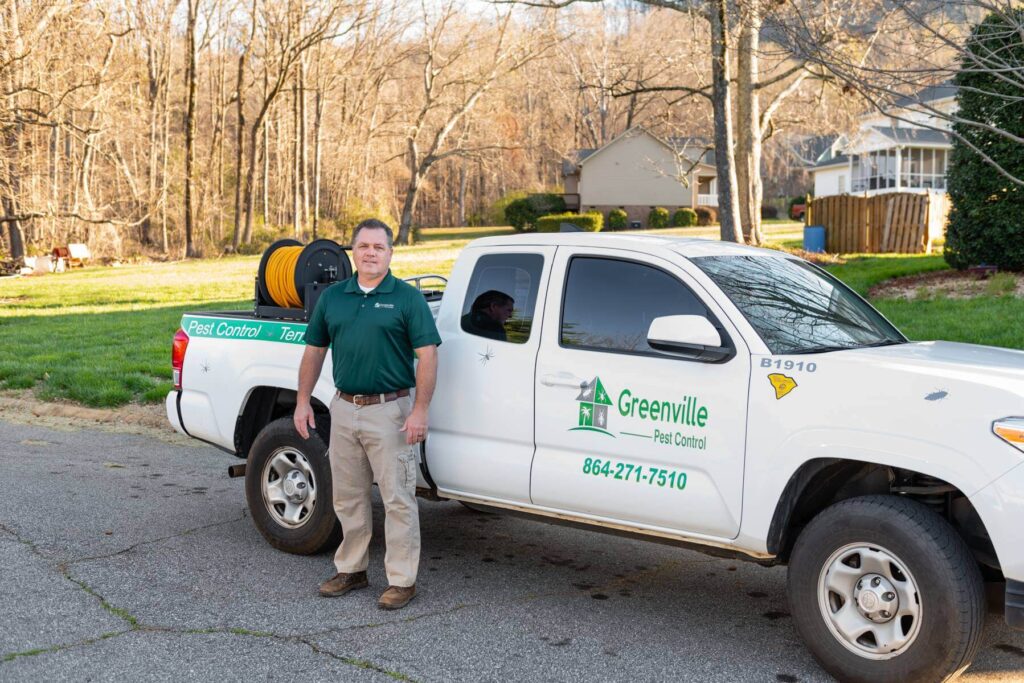Keeping pests out of your home or business starts with one of the most overlooked, yet powerful, strategies: sealing entry points. Small cracks, gaps, and holes in your building’s structure can become prime gateways for insects, rodents, and other pests. Addressing these vulnerabilities is an essential part of preventing infestations before they start.
Sealing entry points isn’t just a quick fix, it’s a long-term solution that supports your overall pest management strategy. From limiting pest access to maintaining structural integrity, exclusion is a key element in keeping properties safe, healthy, and pest-free.

Small Openings, Big Problems
Pests only need the smallest access points to enter a structure. Rodents can squeeze through holes as tiny as a dime, and insects can slip through even finer gaps. These access points often appear around:
- Window and door frames
- Utility line penetrations
- Roof edges and vents
- Foundation cracks and crawl space gaps
Once pests get inside, they can quickly multiply, cause damage, and compromise health standards. Sealing these openings early helps prevent this chain reaction and eliminates one of the most common causes of infestation. Some invaders, like pavement ants in Greenville, can exploit even the tiniest cracks and create ongoing problems if not addressed proactively.
Preventing Pest Access Limits the Need for Reactive Treatments
One of the strongest advantages of sealing entry points is the reduced need for ongoing chemical treatments or emergency pest control visits. When pests are denied entry, the interior environment becomes far less vulnerable.
Benefits include:
- Reduced use of pesticides: Lower reliance on chemicals creates a safer space for occupants, pets, and the environment.
- Cost savings over time: Fewer infestations mean fewer emergency visits or repeat treatments.
- Fewer disruptions: Avoid the inconvenience of post-infestation cleanup, repairs, or temporary evacuations.
- Stronger defense overall: A sealed building creates the first line of defense in an integrated pest management (IPM) approach.
By limiting access, you’re addressing the root cause rather than just the symptoms of pest activity.
Entry Points Often Indicate Structural Weaknesses
Gaps, cracks, and crevices in a building’s exterior don’t just invite pests, they can also signal underlying issues. These may include wood rot, shifting foundations, aging weatherproofing, or water damage. Each of these can attract a specific type of pest, from cockroaches to termites to mold-loving insects.
In addition to pest prevention, sealing entry points often triggers necessary repairs that improve energy efficiency, insulation, and the overall durability of the structure. Trained professionals can help spot not only where pests may enter, but also why those areas became vulnerable in the first place.
Seasonal Shifts Make Exclusion Even More Crucial
Pest activity fluctuates with the seasons. As temperatures change, so does pest behavior. Sealing entry points before seasonal shifts can stop pests from moving in when they’re most likely to seek shelter indoors.
Seasonal factors to consider:
- Fall and winter: Rodents, cockroaches, and other pests seek warmth and food indoors.
- Spring and summer: Ants, termites, and other pests become more active and search for nesting sites.
- Rainy seasons: Excess moisture can drive pests like cockroaches, termites, and rodents indoors.
- Dry spells: Pests like rodents and mosquitoes may enter homes searching for water sources.
Prepping your structure ahead of these seasonal changes means you’re not caught off guard during peak activity times.
Sealing Entry Points Supports Long-Term Pest Prevention Goals
Pest control is most effective when it’s part of a long-range prevention strategy. Sealing entry points forms a foundational part of that approach, making other pest control methods more effective and reducing recurrence.
Why sealing entry points supports long-term goals:
- Eliminates repeated infestations: Pests can’t return if they can’t reenter.
- Complements other control methods: Sanitation, monitoring, and targeted treatments work better in a sealed environment.
- Improves compliance in sensitive industries: Food service, healthcare, and hospitality operations require consistent pest-proofing.
- Increases peace of mind: Homeowners and facility managers can feel confident in the integrity of their property.
Whether you’re dealing with ants, roaches, or looking to prevent bed bugs from spreading, exclusion gives you the defensive edge you need for long-term success.
Professional Expertise Makes a Difference
Identifying every possible entry point isn’t always easy. Some are hidden behind siding, under decks, inside crawl spaces, or at roof junctions. While some simple fixes can be handled by property owners, thorough and effective exclusion work benefits from professional expertise.
Pest control specialists are trained to detect subtle signs of pest activity, assess building vulnerabilities, and apply durable materials that withstand seasonal weather and wear. Professionals also bring region-specific knowledge, helping tailor exclusion efforts to the exact types of pests most likely to threaten your property.
Conclusion: Seal Now, Prevent Later
Sealing entry points is one of the most practical, affordable, and effective steps you can take to prevent pests from ever becoming a problem. It supports long-term structural health, limits exposure to chemicals, reduces repair costs, and contributes to a pest-free environment year-round.
Whether you’re managing a residential home or a high-traffic commercial space, exclusion is a cornerstone of any successful pest control plan. While some tasks are manageable on your own, the most thorough results often come from a trained eye.If you’re ready to protect your property from hidden pest risks, contact Greenville Pest Control today for expert assistance and long-term pest prevention solutions.


